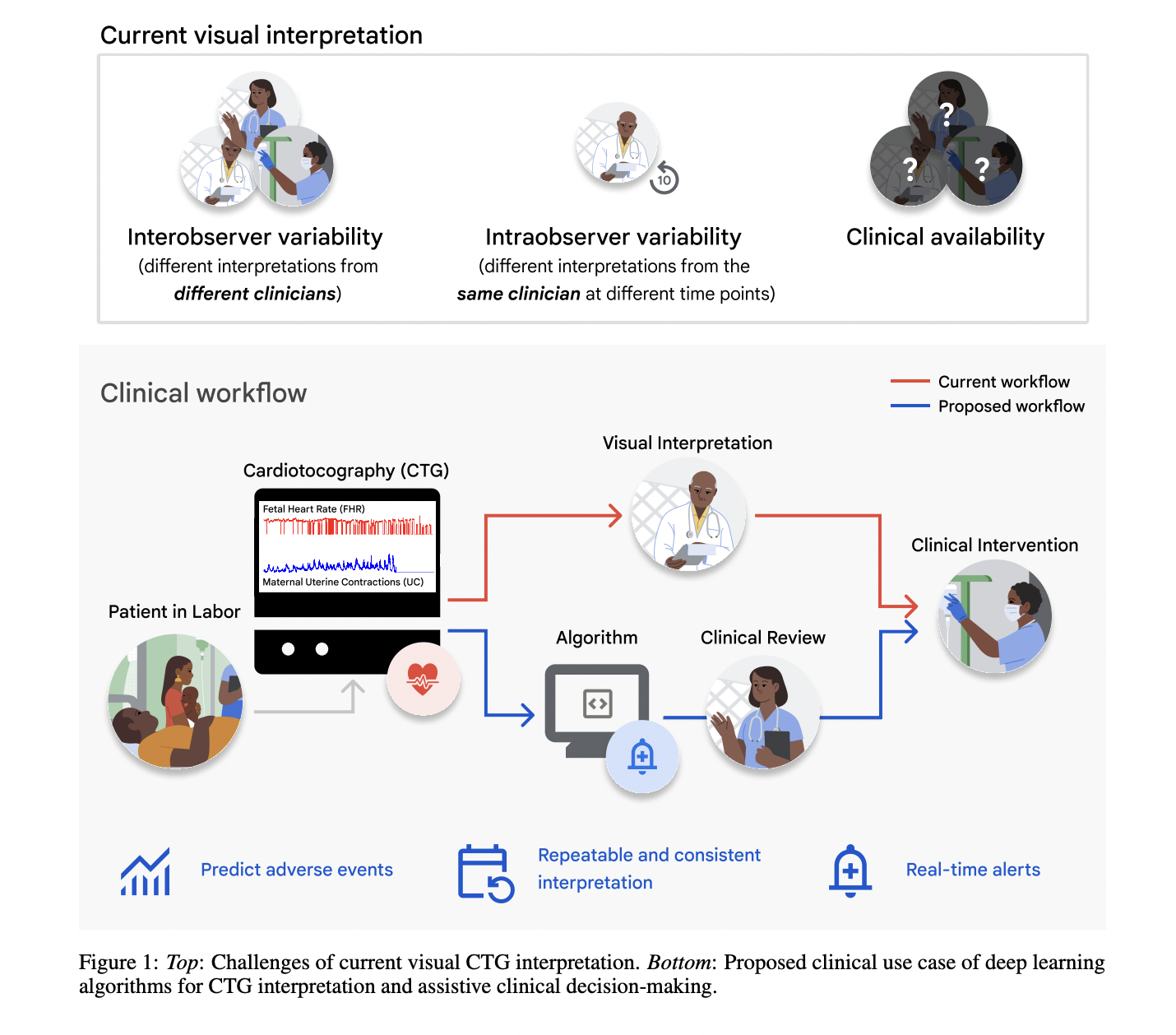Google AI Researchers Investigate Temporal Distribution Shifts in Deep Learning Models for CTG Analysis

Cardiotocography (CTG) is a non-invasive method used to monitor fetal heart rate and uterine contractions during pregnancy. This data can help identify potential complications early on, such as fetal distress, preeclampsia, or preterm labor. However, interpreting CTG recordings can be subjective and prone to errors, leading to potential misdiagnosis and delayed intervention. It can be a disadvantage in low-resource settings where skilled CTG interpreters are scarce, leading to higher risks in fetal monitoring and the potential for misdiagnosis. Google researchers addressed the challenge of variability and subjectivity in clinical experts’ interpretation of visual cardiotocography (CTG), specifically focusing on predicting fetal hypoxia, a dangerous condition of oxygen deprivation during labor, using deep learning techniques.
Traditional CTG interpretation relies on visual analysis guided by established standards such as those from the National Institute of Child Health and Human Development (NICHD) and the International Federation of Gynecology and Obstetrics (FIGO). Some machine learning (ML) models have been used to improve CTG interpretation, but these models often extract diagnostic features based on rules that reduce the richness of CTG time-series data. In response, Google utilizes a deep neural network, CTG-net, to process the time-series data of fetal heart rate (FHR) and uterine contractions (UC) in order to predict fetal hypoxia. The model uses physiological data to interpret CTG objectively, improving traditional methods that depend on expert judgment.
The CTG-net model utilizes a convolutional neural network (CNN) architecture to analyze FHR and UC signals, learning their temporal relationships. Researchers conducted extensive evaluations using the CTU-UHB Intrapartum Cardiotocography Database, which includes 552 CTG recordings, and compared two types of ground truth labels: umbilical artery blood pH (an objective measure) and the Apgar score (a subjective measure). Results showed that models trained with pH data performed better, particularly when using CTG data from the last 30 minutes before delivery, which most closely reflects delivery outcomes. Pre-training at earlier intervals and fine-tuning during the final 30 minutes further improved performance. The model was also tested in low-resource settings, using intermittent CTG recordings, which demonstrated the model’s potential adaptability to different clinical environments.
In conclusion, the CTG-net model performs better when trained on objective pH data rather than subjective Apgar scores, emphasizing the importance of accurate labels. The study suggests that combining FHR and UC signals with clinical metadata can improve predictions but also raises concerns about fairness, as the inclusion of metadata can exacerbate disparities across demographic subgroups. Overall, the research demonstrates the potential of deep learning models to reduce variability in CTG interpretation and improve fetal outcomes.
Check out the Paper and Details. All credit for this research goes to the researchers of this project. Also, don’t forget to follow us on Twitter and join our Telegram Channel and LinkedIn Group. If you like our work, you will love our newsletter..
Don’t Forget to join our 50k+ ML SubReddit.
We are inviting startups, companies, and research institutions who are working on small language models to participate in this upcoming ‘Small Language Models’ Magazine/Report by Marketchpost.com. This Magazine/Report will be released in late October/early November 2024. Click here to set up a call!
Pragati Jhunjhunwala is a consulting intern at MarktechPost. She is currently pursuing her B.Tech from the Indian Institute of Technology(IIT), Kharagpur. She is a tech enthusiast and has a keen interest in the scope of software and data science applications. She is always reading about the developments in different field of AI and ML.



